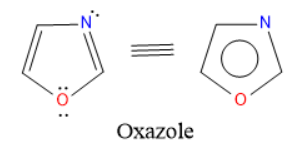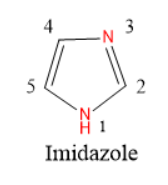Synthesis, Reactions and Medicinal Uses of Quinoline
Synthesis, Reactions, and Medicinal Uses of Quinoline
Quinoline is a bicyclic hetero-aromatic compound having nitrogen at the first position as heteroatom.
Physical properties:
Colour: colourless
State: liquid
Melting point: -15 oC
Boiling point: 237 oC
Solubility: Slightly soluble in water and soluble in organic liquids.
Structure and Aromaticity:
Quinoline is a fused ring system of pyridine and benzene. All atoms in quinoline are sp2 hybridised and have a planar structure. Unhybridised p-orbitals sidewise overlap to form five pi bonds. Quinoline contains a total of ten delocalised pi electrons, follows the huckles rule hence quinoline is an Aromatic.
Resonance structures:
Synthesis of Quinoline:
1. Friedlander Synthesis:
O-amino benzaldehyde reacts with carbonyl compound with active methylene compound in presence of alcoholic NaOH give Quinoline.
2. Knorr quinoline Synthesis:
Condensation of aniline with ketoester gives anilide intermediate, which further cyclization and dehydration to give quinoline.
3. Skraup's synthesis:
The reaction of aniline with glycerol in the presence of concentrated sulfuric acid and the mild oxidising agent gives quinoline.
4. Doebner-Miller synthesis:
Primary aryl amines which don't have any substitutes at ortho positions react with unsaturated carbonyl compounds in presence of an acid catalyst to give quinoline.
Electrophilic addition reactions:
1. Protonation: Quinoline reacts with acids, protonation at Nitrogen to give quinolinium salt.
2. N-Alkylation: Quinoline reacts with alkyl halides to give N-alkyl quinolinium halide.
Electrophilic substitution reactions:
Electrophilic substitution reactions are taking place in the 5th and 8th positions.
1. Nitration: Quinoline upon nitration give 5-nitro and 8-nitro quinoline
2. Halogenation: Quinoline upon halogenation gives 5-halo and 8-halo quinoline.
3. Sulfonation: Quinoline upon sulphonation to give quinolone-5-sulphonic acid and quinoline-8-sulphonic acid.
Nucleophilic substitution reactions:
Nucleophilic substitution takes place at 2nd and 4th position.
1. Quinoline reacts with sodamide at high temperature to give 2-amino and 4-amino quinoline. This reaction is also called as Chichibabin reaction.
2. Quinoline reacts with KOH to give 2-hydroxy and 4-hydroxy quinoline.
Oxidation reactions:
1. Quinoline reacts with potassium permanganate to give pyridine-2,3-dicarboxylic acid, which upon decarboxylation to pyridine-3-carboxylic acid (Nicotinic acid).
2. Quinoline oxidised wth peracetic acid to give Quinoline-N-Oxide.
Reduction reactions:
1. Quinoline reduced with hydrogen and Raney nickel or Sn, HCl gives 1,2,3,4-tetrahydro quinoline.
2. Quinoline reduced with H2/pt in acetic acid give Decahydroquinoline.
3. Quinoline reduced with lithium aluminium hydride or Na in Liq. ammonia gives 1,2-dihydro quinoline.
Medicinal uses:
Drugs containing Quinoline ring:
1. Quinine and Chloroquine are used to treat malaria.
2. Quinidine is used to treat arrhythmia.
3. Ciprofloxacin is an antibiotic used to treat bacterial infections.
4. Camptothecin is used to treat Cancer.
References (Latest editions):
Heterocyclic chemistry by Raj K. Bansal.
Heterocyclic chemistry by T.L. Gilchrist.
Organic chemistry by Morrison and Boyd.
A textbook of organic chemistry - Arun Bahl. B.S. Bahl.
































Comments
Post a Comment